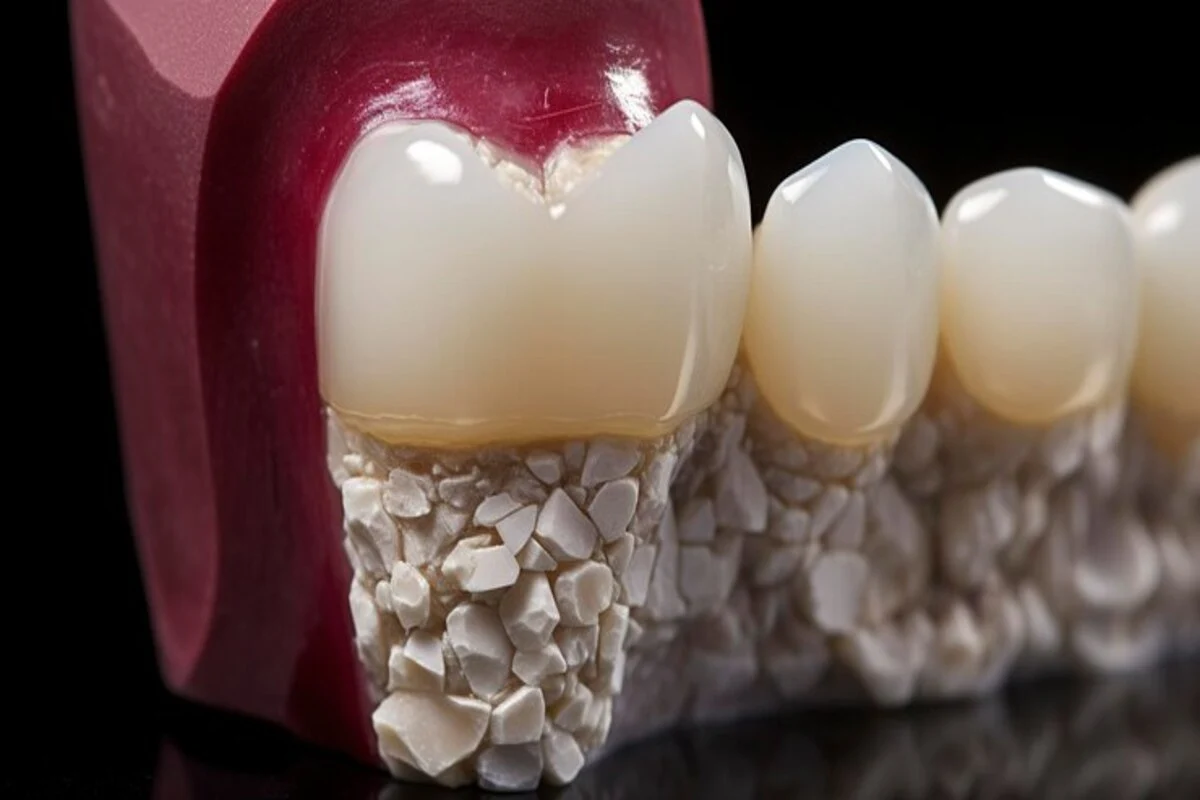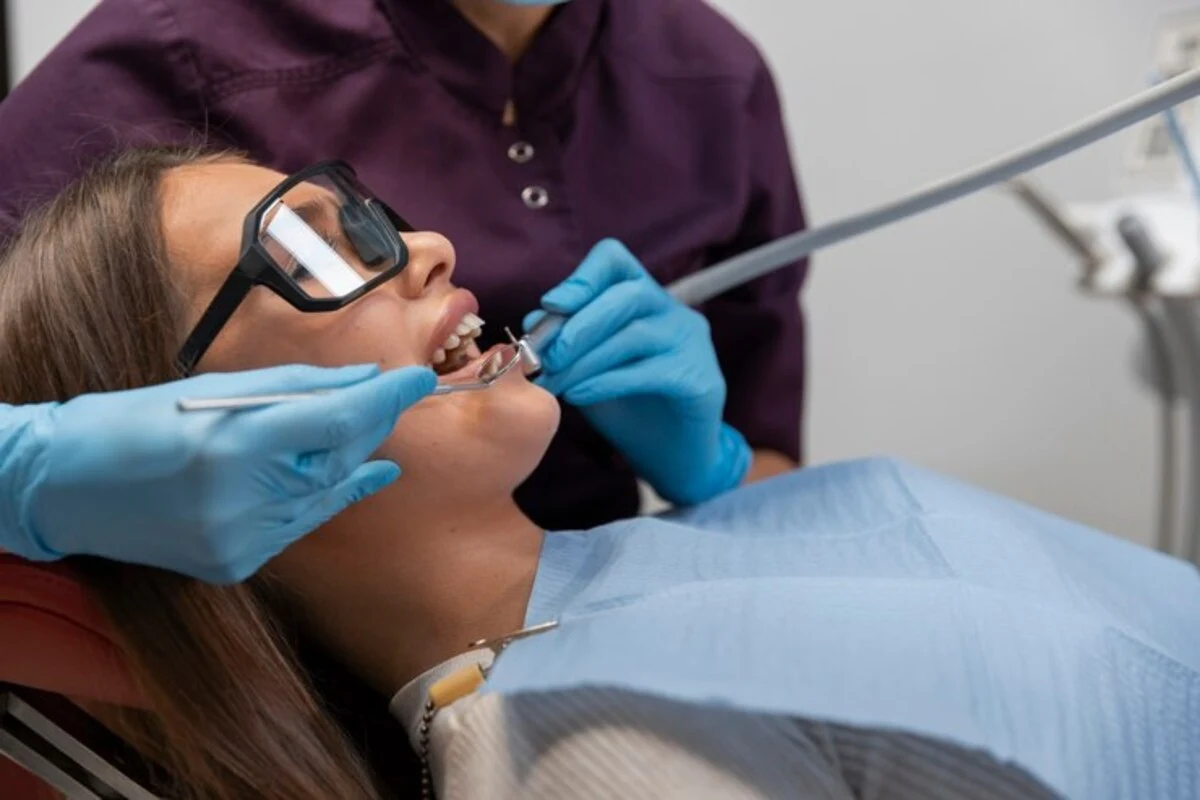Many patients feel anxious when they hear they might need a crown. At FortuneSmilesDental, we understand that the idea of dental procedures can sound intimidating — but in reality, a dental crown treatment is one of the most common and effective ways to protect your teeth, restore function, and bring back your confident smile.
Our experienced team in Blossom Valley has helped countless patients with crowns, using the latest techniques and materials to ensure results that look natural, feel comfortable, and last for years. When you choose us, you’re not just getting a restoration — you’re gaining a partner who cares about your long-term oral health and overall well-being.
What Is Dental Crown Treatment?
A dental crown treatment is a restorative procedure designed to cover and protect a damaged or weakened tooth. The crown itself is a custom-made “cap” that fits securely over your natural tooth, restoring its shape, size, and strength while improving appearance.
Dentists often recommend crowns in situations such as:
-
Severe tooth decay that can’t be repaired with a simple filling.
-
After a root canal, to reinforce the treated tooth.
-
To cover a dental implant, replacing a missing tooth.
-
To protect a cracked or worn-down tooth from further damage.
-
For cosmetic reasons, such as improving the appearance of a discolored or misshapen tooth.
In short, crowns not only restore function but also provide peace of mind — helping you eat, speak, and smile with confidence again.
Read it: A Comprehensive Guide to Dental Inlays
What Is Dental Crown Treatment?
A dental crown treatment is a procedure that restores and protects a tooth by covering it with a custom-made “cap.” This crown looks and functions just like a natural tooth, helping you chew, smile, and speak comfortably again.
Crowns are often recommended in these common situations:
-
Severe tooth decay → when a filling isn’t enough to restore strength.
-
After a root canal → to reinforce and protect the treated tooth.
-
With a dental implant → serving as the visible replacement tooth.
-
To cover cracks, chips, or wear → preventing further damage.
-
For cosmetic enhancement → improving color, shape, or alignment.
When Is Dental Crown Treatment Needed?
Here’s a simple, visual way to explain the main reasons patients might need crowns:
When Is Dental Crown Treatment Needed?
- 🦷 After Root Canal – Protects the tooth and prevents fractures.
- 🦷 Severe Tooth Decay – Restores structure when fillings are not enough.
- 🦷 Cracked or Broken Teeth – Holds the tooth together and restores function.
- 🦷 Dental Implants – Acts as the replacement tooth over the implant post.
- 🦷 Cosmetic Reasons – Improves appearance of stained, worn, or misshaped teeth.
Read it: Biomimetic Approach to Dental Implants

Step-by-Step Dental Crown Treatment Process
At FortuneSmilesDental, we walk you through every step so you feel comfortable and informed.
Traditional Dental Crown Treatment (2 Visits)
-
Initial Visit
-
Examination and X-rays.
-
Tooth reshaped to prepare space for the crown.
-
Impression taken for lab fabrication.
-
A temporary crown placed for protection.
-
-
Second Visit
-
Temporary crown removed.
-
Permanent crown checked for fit, color, and bite.
-
Crown cemented securely in place.
-
Same-Day Crowns (CAD/CAM Technology)
-
A digital scanner captures your tooth (no messy impressions).
-
A 3D model is created instantly.
-
The crown is milled in-office and placed the same day.
-
This option saves time and avoids the need for a temporary crown.
⏱️ Good to know: Same-day crowns are ideal for busy patients who want fast, precise results without multiple appointments.
Longevity & Aftercare
Dental crowns are built to last — but like natural teeth, they require care.
-
Lifespan: Most crowns last 5 to 15 years, with many lasting even longer with proper care.
-
Home Care Tips:
-
Brush twice daily with fluoride toothpaste.
-
Floss around the crown to prevent gum issues.
-
Use a nightguard if you grind your teeth.
-
-
What to Avoid:
-
Chewing on ice or hard objects.
-
Using teeth to open packages.
-
Frequent snacking on sticky candies, which can loosen crowns.
-
⭐ Quick Tip:
With good care and regular dental visits, your crown could last well over a decade — sometimes even a lifetime.
Read it: The Rise of Minimally Invasive Dentistry
Cost & Insurance Information
The cost of a dental crown treatment varies depending on the material chosen, procedure type, and insurance coverage.
Typical Cost Ranges in the U.S.
-
Metal or PFM Crowns: $800 – $1,500
-
All-Ceramic or Porcelain Crowns: $1,000 – $2,500
-
Zirconia or E-Max Crowns: $1,200 – $3,000
-
Same-Day CAD/CAM Crowns: $1,200 – $2,500
Insurance Coverage
-
Most insurance plans cover part of the cost if the crown is medically necessary (e.g., for decay or after a root canal).
-
Cosmetic-only crowns may not be covered.
Financing Options
At FortuneSmilesDental, we believe cost should never stand between you and your oral health. We offer:
-
Flexible payment plans.
-
Third-party financing options.
-
Transparent upfront estimates with no hidden fees.
Conclusion
A well-designed crown restores function, protects the tooth, and looks beautifully natural. With our digital workflows, material expertise, and gentle approach, dental crown treatment at FortuneSmilesDental is efficient, comfortable, and built to last.
✅ Ready for a durable, natural-looking solution? Book a consultation or call us today. We’ll review your options (traditional vs. same-day), materials, insurance benefits, and give you a transparent, personalized plan.

